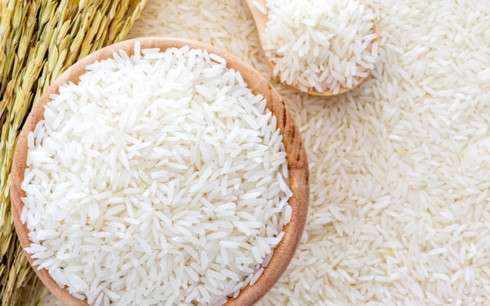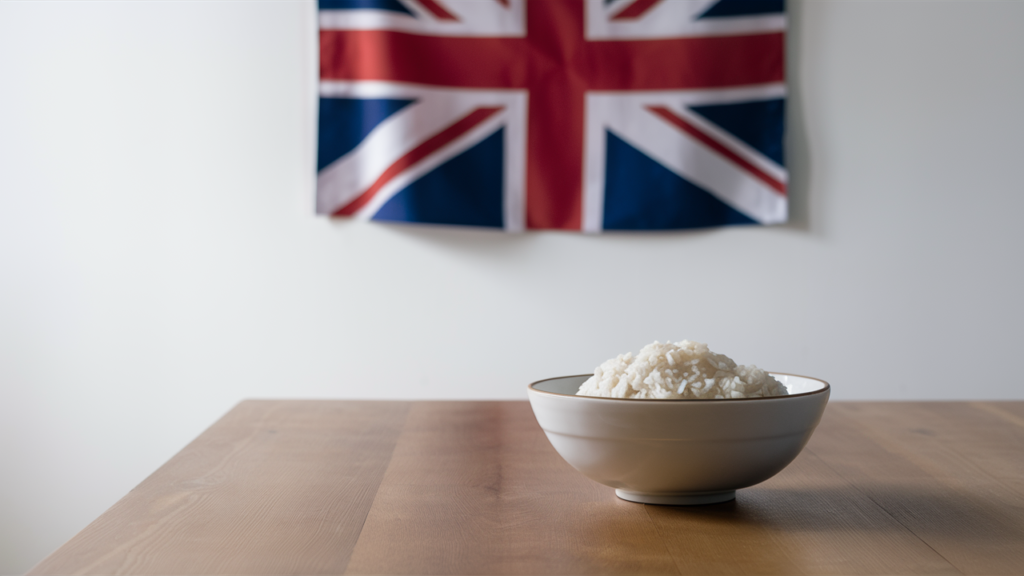Basmati Rice is a long-grained type of rice that originates in the foothills of the Himalayas and is traditionally served in Pakistani and other Asian cuisines.
Basmati rice is served plain sometimes but often flavored with turmeric or saffron, both of which impart a characteristic of yellow hue. Frequently served alongside various braised, curries, or roasted meats, or as the main ingredient in classic biryani.
It’s unique and has a distinctive nutty flavor, having floral aroma similar to that of Jasmine rice, which is commonly used in Pakistani/Thai and other South Asian cooking. When cooked, Basmati has a softer grain than jasmine rice, while Jasmine has a nuttier flavor.
Brown Basmati Vs. White Rice
Basmati rice is produced in white and brown. The white version is produced by removing the germ (seed that causes the rice plant to grow), leaving the white starchy portion, as well as bran (the outer husk or covering of each grain) from the brown version.
As we know that bran provides essential fatty acids and dietary fiber, and the germ contains a number of essential nutrients, the brown version of Basmati is generally considered healthier than the white version. Brown basmati also has a firmer texture than white and has a nutty flavor in it.
Unlike any rice, Basmati rice has the longest grains, and it is known for its longer duration during cooking. It’s also extremely narrow, rather than rounded or stubby ends.
Basmati Grains: Fluffy and Light
High-quality basmati rice goes through a two-year aging process to dry it as thoroughly as possible, which in turn concentrates its aromas and distinctive flavors.
Basmati rice is prized for its fluffy, light, fluffy, with the grains remaining separate rather than making a sticky texture.
However, rinsing it before cooking is a good idea, as it helps to remove any starches from the rice, which would tend to make the cooked rice looked glued.
Cooking Basmati Rice
This rice is typically prepared using the traditional cooking method, which happens to produce the fluffiest, non-sticky rice, regardless of its variety.
You can ordinarily prepare basmati rice, via cooking it in a rice cooker or simmering it, but if you want to enjoy all its flavor, the pilaf method is the only way to go.
The pilaf method does require an extra step to make it more delicious. It comes down to sautéeing the uncooked rice in oil, along with minced onions, herbs, and other aromatics, then adding hot stock and transferring the whole pot, tightly covered, to the stove and cooking it until all the liquid is absorbed.
Sautéeing beforehand contributes greatly to the fluffiness of the rice as it coats each grain with oil, which in turn helps prevent sticking. The high temperature of the oil also imparts a toasty flavor and helps bring out more of the rice’s nuttiness.
In traditional Pakistani dishes such as the classic biryani, the pilaf is flavored by adding whole spices such as star anise, allspice, whole cinnamon sticks, and cardamom pods along with the stock before transferring it to the stove.
Buying and Storing Basmati Rice
While the traditional form of Basmati is grown in Pakistan and India, there are a few U.S.-grown hybrids that go by names such as Calmati and Texmati. A combination of Jasmine and Basmati rice is known as Jasmati, combining Basmati’s soft grain with Jasmine’s nuttier flavor, could also be found.
All of these varieties are available in brown and white. Whether you opt for one of the hybrids or the traditional variety, all types of brown rice take a bit longer to cook. And when it comes to storing it, the life of the white rice is significantly longer, because the fatty acids found in the rice bran can eventually turn rancid and spoil.
A certain delicious smell comes from cooking any rice- but basmati rice is known for filling up streets with its pleasant and sweet aroma. And the health benefits of this rice are just as pleasant and sweet!
Below we are listing eight Incredible Basmati Rice health benefits and why should you consume it!
1. Diabetes-Diet Friendly
Basmati rice has a low glycemic index ratio than any other rice, according to the Diabetes Association of Canada. So, sugar patients can still enjoy rice after being diagnosed with diabetes.
2. Good for Dieting
It’s safe to consider basmati rice is diet-friendly as it promotes your dieting goals, and provide you with more energy. However, this rice contains a high amount of amylose, which is a type of carbohydrate that is a bit hard for the body to digest.
3. Promote Heart Health
Basmati rice is lower in saturated fats, and a lack of saturated fats is already a heart-healthy benefit, but Basmati also contains an ample amount of fiber in it that can provide a healthy cardiovascular system if you eat it quite often.
4. A Great Digestion/Constipation Aid
Soluble fiber is found in Basmati, and it works by promoting the gastrointestinal movement of material within your digestive system, making it a genuine aid for people who are struggling with stomach issues.
5. Ability to Prevent Cancer Cell Formation
Basmati rice contains nearly 20% more fiber than the typical grocery store brown rice, and it enhances the body’s ability to fight and prevent the formation of cancer cells.
Many researchers have a firm believe that fiber can protect you against many forms of cancer, but colon cancer is at the top of the list.
6. Lowers Blood Pressure
If you regularly eat basmati rice, chances are your blood pressure may be lowered due to particular nutrients that the rice holds.
7. Promotes Healthy Brain Function
Basmati rice contains a vitamin called thiamine (B1), which is commonly known as a “brain vitamin.”
Not only does it have the ability to improve both memory and concentration, but it can aid in the positive functions of the nervous system and promote overall mental positivity.
8. It’s A Great Source of Energy
Carbohydrates are the fuel that keeps the body energetic and going on a daily basis. Basmati rice is rich in complex carbohydrates, which boosts the metabolic function in the body. If you are feeling lethargic, it might be because you’re not getting enough carbs, as they are what provides energy to the cells.
Conclusion
The benefits of basmati rice are endless. Therefore, it might be safe to say that you should make the switch from standard rice to basmati rice. Moreover, not any it is healthy, its flavor and aroma can turn any recipe delicious. So by now you know about Basmati rice and could relish your favorite dishes while reaping the health benefits of it.












